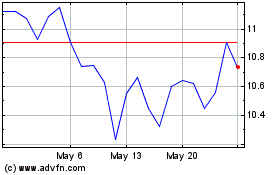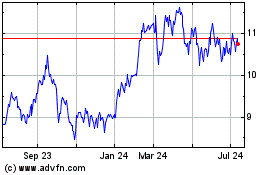Rising prices dulled new-car demand as U.S. buyers looked for
deals at used-car lots.
By Nora Naughton
This article is being republished as part of our daily
reproduction of WSJ.com articles that also appeared in the U.S.
print edition of The Wall Street Journal (July 3, 2019).
Major auto makers saw U.S. new-vehicle sales drop in the first
half, a decline expected to extend for the remainder of the year as
the U.S. auto industry's historic sales run tapers off.
Rising car prices and higher interest rates dulled demand in the
year's first six months, with many buyers flocking to the used-car
lot looking for deals. A dramatic shift away from sedans and
compact cars helped dent sales volumes in the first part of the
year as General Motors Co. and other auto makers discontinued these
models.
U.S. new-vehicle sales this year are likely to fall short of the
17 million mark for the first time since 2014, analysts predict. A
protracted run of strong sales following the financial crisis has
satisfied pent-up demand, they say.
"We're just past the peak," said Michelle Krebs, an automotive
analyst at Cox Automotive. "Auto sales have been edging downward,
but it's nothing catastrophic."
The research firm J.D. Power estimates the annualized selling
pace in June to come in at 17.3 million, lower than a year
earlier.
The U.S. auto industry in the first half has posted six straight
months of weaker sales compared with the same period in 2018,
according to Cox Automotive.
GM's U.S. sales slid 4% through June, while Fiat Chrysler
Automobiles NV reported a 2% decline in the first six months.
Among the Japanese car companies, Toyota Motor Corp. was off 3%
in the first half, Nissan was down 8.2% and Honda Motor Co.'s U.S.
sales fell 1.4%.
Ford Motor Co. is the only major auto maker that will report
quarterly sales on Wednesday.
As the pace of sales slows, auto makers are wrestling with
keeping discounts in check, while also confronting rising inventory
levels and sticker prices that are stretching buyers' wallets.
The average new vehicle sold for about $33,350 in the first six
months, a record for the period and up nearly 4% from a year
earlier, according to an estimate from J.D. Power.
Prices are rising partly because U.S. buyers continue to
gravitate toward sport-utility vehicles and pickup trucks with
higher price tags.
The pace of sales remains historically strong, and analysts say
solid economic indicators and an expected influx of fresh models
into U.S. showrooms in coming years should keep sales from dropping
too steeply.
GM Chief Economist Elaine Buckberg said expected interest-rate
cuts should help new-vehicle demand in the second half of the year.
The Detroit auto maker said it commanded higher prices for its
models in the second quarter, with pricing up 4% to $37,126 per
vehicle.
"Auto demand was better than anticipated in the first half, and
we expect strong performance in the second half of the year," Ms.
Buckberg said in a statement.
Interest rates started to come down this spring after swelling
earlier in the year, with June's average hitting 6%, the lowest
this year, according to Edmunds.
"High interest rates have been the biggest story so far this
year, and for good reason," said Edmunds analyst Jessica Caldwell.
"The trickle-down effect has been significant for all areas of the
auto market."
The slowdown in the U.S. market comes as markets in Europe and
China are cooling. In a research note last week, Morgan Stanley
forecast global auto production to fall 4% this year, which will
pressure profits for suppliers and car companies.
Shoppers turned off by high sticker prices are finding
attractive used-car deals as a surge of newer SUVs coming off lease
wind up on used-vehicle lots. Used-car sales grew by around 9% in
the first half of the year, according to an estimate from J.D.
Power.
GM's U.S. sales decline in the first half was largely related to
weaker sedan sales and tighter inventories of its heavy-duty
trucks. Fiat Chrysler posted lower U.S. sales for five of its six
brands, including Jeep. Its profit-rich Ram truck division was the
one standout, with sales up 28% in the first six months.
Toyota, Honda and Nissan saw slowing sedan sales in the first
half as more buyers moved to models such as the RAV4 compact
crossover, Ridgeline pickup and the Pathfinder large SUV.
Subaru Corp. and Hyundai Motor Co. bucked the broader sales
slowdown in the first half with sales up 5.2% and 1.7%,
respectively, an increase bolstered by strong sales of their
sport-utility vehicles.
--Aisha Al-Muslim contributed to this article.
(END) Dow Jones Newswires
July 03, 2019 02:47 ET (06:47 GMT)
Copyright (c) 2019 Dow Jones & Company, Inc.
Subaru (PK) (USOTC:FUJHY)
Historical Stock Chart
From Feb 2025 to Mar 2025

Subaru (PK) (USOTC:FUJHY)
Historical Stock Chart
From Mar 2024 to Mar 2025
